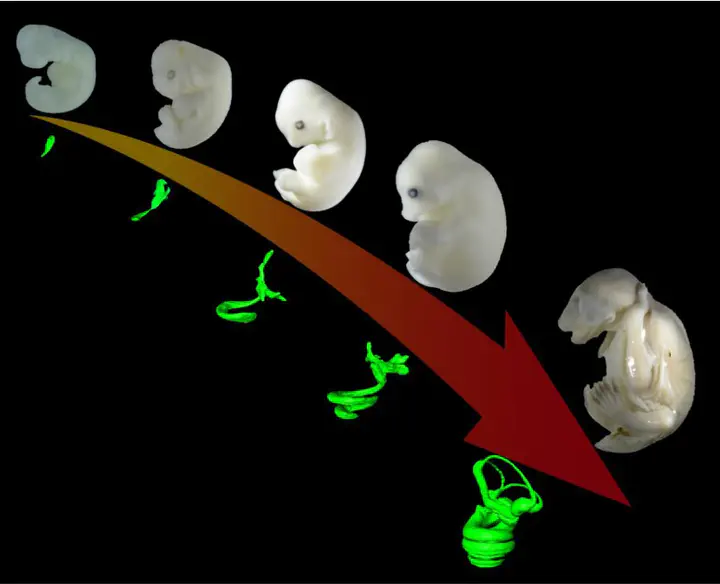Embryonic staging of bats with special reference to Vespertilio sinensis and its cochlear development

Abstract
Background: How bats deviate heterochronically from other mammals remains largely unresolved, reflecting the lack of a quantitative staging framework allowing comparison among species. The standard event system (SES) is an embryonic staging system allowing quantitative detection of interspecific developmental variations. Here, the first SES-based staging system for bats, using Asian parti-colored bat (Vespertilio sinensis) is introduced. General aspects of normal embryonic development and the three-dimensional development of the bat cochlea were described for the first time. Recoding the embryonic staging tables of 18 previously reported bat species and Mus musculus into the SES system, quantitative developmental comparisons were performed. Results: It was found that limb bud development of V. sinensis is relatively late among 19 bat species and late limb development is a shared trait of vespertilionid bats. The inner ear cochlear canal forms before the semicircular canal in V. sinensis while the cochlear canal forms after the semicircular canal in non-volant mammals. Conclusions: The present approach using the SES system provides a powerful framework to detect the peculiarities of bat development. Incorporating the timing of gene expression patterns into the SES framework will further contribute to the understanding of the evolution of specialized features in bats
Nojiri, T., Fukui, D., Werneburg, I., Saitoh, T., Endo, H., and Koyabu, D.
Developmental Dynamics